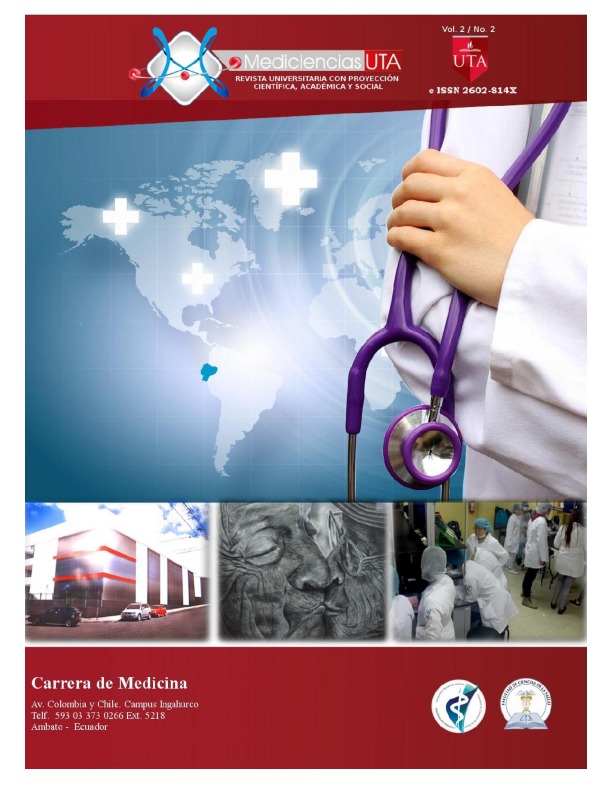Epidemiological aspects of infection by the human immunodeficiency virus in Cotopaxi
Main Article Content
Abstract
Introduction: The Human Immunodeficiency Virus (HIV) is anagent that attacks the immune system, depressing itprogressively and evolves to the syndrome ofacquiredimmunodeficiency (AIDS). Deaths from this cause in Ecuadorrepresent 3% in Latin America, 2014 according to UNAIDSreports, show that there are 31855 people currently livingwith HIV in Ecuador, there are no data by province reflectingthe epidemiological trend of the pandemic.
Objective: To describe the sociodemographic aspects that characterize the behavior of HIV in Cotopaxi.
Material and methods: a longitudinal and retrospectivedescriptive study was conducted in the first half of the year2015 in the General Provincial Hospital in Latacunga.
Results: 114 patients were enrolled in the study, of them 12new cases. Predomino 72.8% male, aged 20-34 years in57,89%. The canton of highest incidence was the Mana39,47%. In terms of clinical status; 53,51% infected andundergoing AIDS 46,49%.
Conclusions: The epidemiological behavior of the HIVinfection in the province of Cotopaxi reflects that thepredominant male, mixed race and the aged between 20 and 34 years.



